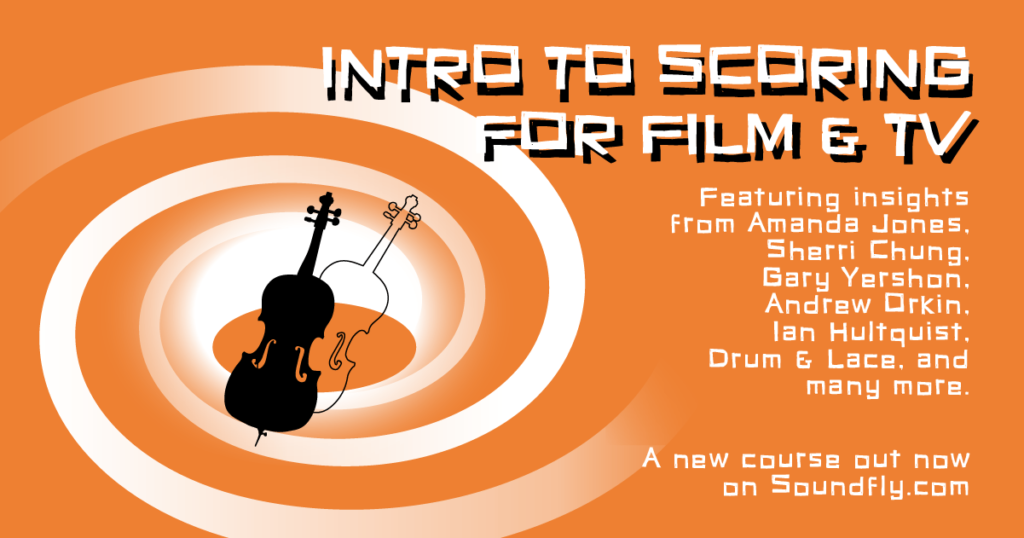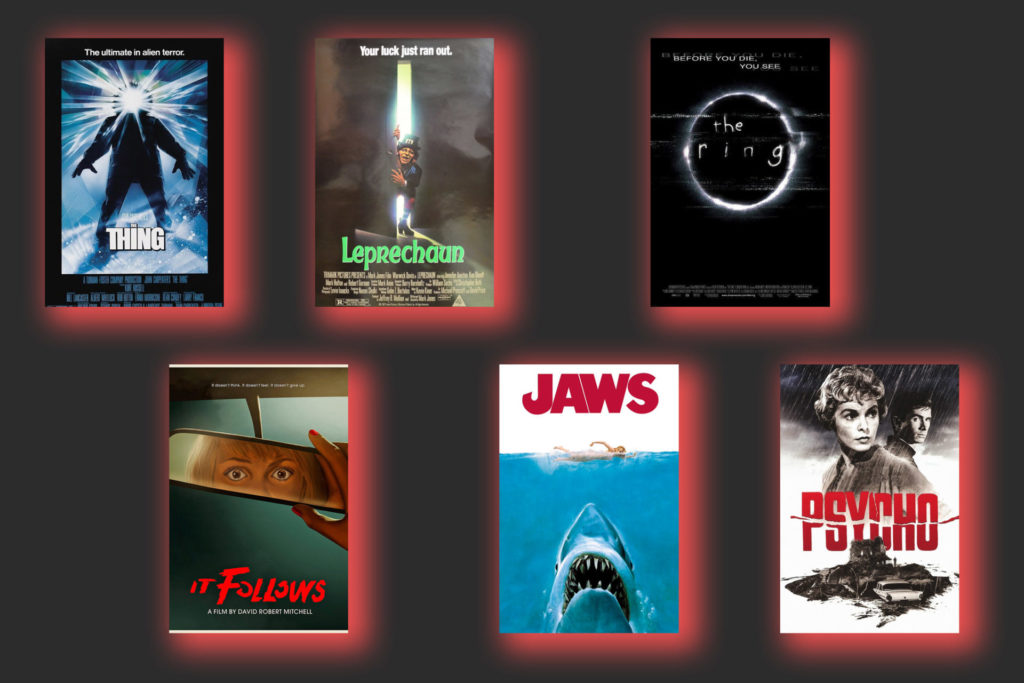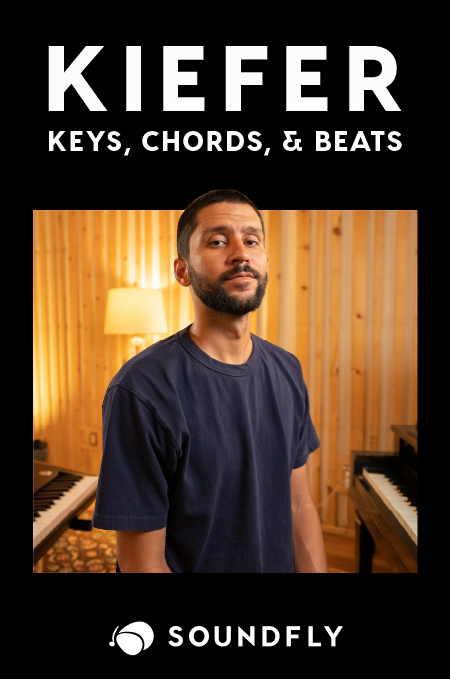+ Soundfly’s Intro to Scoring for Film & TV is a full-throttle plunge into the compositional practices and techniques used throughout the industry, and your guide for breaking into it. Preview for free today!
All sound is a physical phenomenon; and music is no different, traveling into our ears through sound waves made in the air. But not all musical sounds are the same.
Put two different pitches side by side and you’ll end up with something on a spectrum between consonance and dissonance. Consonant sounds are pleasant, soothing and harmonious, while dissonant sounds are crunchy, unsettling, and sometimes just outright freaky.
There is, believe it or not, a physiological reason for this.
The more consonant a sound is, the more the various sound waves overlap nicely so their peaks and valleys line up. One of the most consonant sounds is a perfect fifth, a sound so lovely and comforting that early minimalist composer La Monte Young had one playing in his house at full bore 24/7 for years and years (still not as bad as my old college roommate who played Nirvana non-stop for six months).
A perfect fifth is consonant because the sound waves interact at a ratio of 3:2, so for every 3 waves of the upper note there are 2 of the lower note, so they cross over nicely and regularly. On the other hand, there’s dissonance. And it only takes two notes to really set your nerves a-jangling. I’m thinking of one of the most iconic scary movie music themes: Jaws.
Duuuuuuh Duh…
The Jaws theme is based on two notes, E and F. Those two notes next to each other make a minor second, which is one of the most dissonant intervals in Western music, with a ratio of 16:15. This means the two sound waves crunch up against each other and does not feel pleasant in the ear.
When a composer deliberately uses dissonant sounds we find it disorienting, even agitating, because we’re left flailing to find something to hold onto as a solid point of reference. It’s similar to how you would flail about if you were paddling off the coast of Amity Island and you saw a 25-foot long long shark bearing down on you.
Harmonic dissonance is only one way that composers use psychological and even physiological reactions to musical sounds to turn a straightforward visual film scene into something eerie, unsettling, or downright anxiety-inducing. Here are a few others.

Slow Tempo, Strong Beat
Switching it up for a second, who doesn’t love a good David Attenborough-style nature documentary? All those animals doing animal things.
It’s always fascinating to watch how the predators stalk their prey. They move slowly, deliberately, sneakily, their victim chewing grass or… I dunno, being a beetle, and then BAM. Dead. Thanks for dinner.
There must be something deep inside our lizard brain that still resonates with this scenario because lots of composers use the fear of something stalking you in their horror movie themes.
Specifically a slow tempo with a strong sense of beat. It taps into millions of years of fear of being someone else’s surprise breakfast because deep down we can innately feel when we’re being followed. We sense it coming. And it’s not in a rush. It’s taking its time. And it’s not afraid of you.
But you should be afraid of it.
Another example can be found in the “Title Theme” to It Follows, written by Disasterpeace.
Once the movie is up and running and college freshmen are showing up dead all over the place the music often picks up some pace. But it rarely gets into what anyone would describe as speedy. Instead, the pulse gets stronger and stronger. And I use the word “pulse” deliberately — inside each and every single one of us is one of nature’s best beat-machines: our heart. And when we’re afraid it pounds. Loud, and clear, and to a beat.
And what do hearts and horror movies have in common? Blood. Lots and lots of blood.
+ Read more on Flypaper: “The Cutting Edge: 10 Film Scores That Push the Boundaries of Composition.”
Bells and Strings, Strings and Bells
If I had to pick one instrument that is the-go-to instrument for horror movie composers, I couldn’t do it, because in my opinion it’s a photo finish between strings and bells. They’re both everywhere in horror music. Even scores that rely on synth instruments still use string- and bell-sounds, like Stranger Things.
Why? For very different reasons: one is because of the way the sound is made, the other is because of what the sound represents.
Anyone who’s ever heard a seven-year-old learning the violin will attest that that sound is… difficult to listen to. It’s like nails on a blackboard, or a fork scratching a plate. My teeth ache just thinking about it. There’s even a word for the feeling this sound evokes: “grima.”
Even after years of practice and a crisp, clean tone, buried underneath the sweetest violin melody is still the sound of the bow scrraaaaping across the strings. Horror movie composers exploit that. Think about the famous stabby shower music from Psycho. It’s dissonant, jagged, and very “scrape-y,” like a knife scraping across bone.
And bells! They’re everywhere in scary movies.
Little bells evoke childhood innocence — like those old music boxes we played with in youth — and that makes us revert back to when we were small, powerless, and utterly unable to protect ourselves from things that scared us.
Big bells, on the other hand, are closely tied to Christianity, which is a common source of horror movie tropes, malevolent supernatural forces that would love nothing more than to consume your immortal soul.
+ Read more on Flypaper: “The Sound of Fear.”
Low Drones and Infrasonic Sounds
There’s this amazing story about a kitchen in an old English pub that everyone swore was haunted. Staff cleaning up at night would report a sense of dread, or seeing a figure at the edge of vision that would disappear when faced. They went so far as to get an exorcist come in, but nothing worked… until the kitchen was renovated and then it stopped.
Did the ghost disapprove of the new modern decor? No, an enterprising investigator figured out that at night the big exhaust fans over the stove were turned off, but air moving through the drafty old pub meant the fans kept turning really slowly and created an infrasonic sound wave. The renovations replaced the big old fans with smaller zippy ones, so, no more infrasonic sound waves.
Infrasonic sounds (sounds below the range of hearing) have been scientifically proven to cause all kinds of unpleasant affects on people, including hallucinations and fear. I’m not sure if horror movie composers have included actual infrasonic sounds directly in their music, but oodles of spooky soundtracks like this one have something in common:
And, this one:
Or, this one.
They all have big, long, low frequency drones right on the cusp of hearing sitting underneath all the bells and strings and heartbeat-pulses and chromatic weirdness, and that’s why.
Extremes in Dynamics
One of the most ubiquitous features of scary movies is the “jump scare.” The hero barely manages to escape from the clutches of a knife-wielding maniac/eldritch horror from beyond the stars/murderous leprechaun, and breathes a deep sigh of relief. The music is minimal, perhaps it disappears altogether… and then BLARGH!
Out of the shadows leaps their nemesis, accompanied by the whole film orchestra apparently playing every single note available to them fortissimo.
And we jump. Boy, do we jump. (Let the record show, I am definitely a jump-scare jumper.) We all know that loud noises scare us. But did you know that loud noises are one of only two things we are all born with an innate fear of, the other being heights?
I always find this fact fascinating, if only because I swear to God I was born with an innate fear of spiders, but that could also be because I live in Australia where spiders the size of dinner plates will show up unannounced in your bathroom on a regular basis, and nothing gives you a jump scare like one of those monsters hiding behind your towel.
In Space, There’s Plenty of Room to Scream
Next time you watch a scary movie, pay attention to how spacious the music is. Scary movie music often has huge sonic gaps both horizontally and vertically. What do I mean by that?
Well let’s go back to the drone I mentioned before. It’s not uncommon for scary music to consist primarily of a long low sound underneath a minimal melody and harmony way up the top end of the orchestra. If you think about what that might look like on paper, there’s a big vertical gap between the low sounds and the high sounds.
Similarly, scary themes often have big gaps between musical “events,” horizontally across the page. Melodies are fragmented, broken up by weird sounds or even silence. One of my favorite examples of this is from Alien.
These big sonic gaps in the music are unsettling because they push yet another deep evolutionary button to be suspicious of things which are too quiet. The music is exposed, so we feel exposed, and therefore vulnerable. We know something is wrong, and we’re waiting for the “thing” to happen. But we have no idea what the thing is or when it’s coming. All in all it’s a pretty creepy feeling.
So that’s just a short list of ways composers can manipulate you through music to scare the pants off of you. Thanks for reading, because I’m going to have to sleep with the light on for the rest of the week.
Have you checked out Soundfly’s courses yet?
Continue your learning with hundreds of lessons by boundary-pushing, independent artists like Kimbra, Ryan Lott & Ian Chang (of Son Lux), Jlin, Elijah Fox, Kiefer, Com Truise, The Pocket Queen, and RJD2. And don’t forget to try out our intro course on Scoring for Film & TV.




